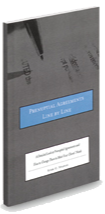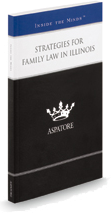In Tulsa, victims of domestic violence, harassment, stalking, and other violent crimes can file for protection through victim protective orders (VPOs) and other protective orders. These orders can prohibit another individual from contacting, approaching, or behaving violently toward the person who files the order. When filing for a long-term protective order, a petitioner must present evidence to explain why they need a protective order. This can be easier with a protective order attorney.
Although a protective order cannot stop an individual from harassing someone or engaging in violent behavior against them, it can impose criminal penalties, like fines and jail time, if the terms of the order are violated.
Types of Protective Orders in Tulsa
A VPO, or victim protective order, has three different levels, each lasting a different period of time. The different types of protective orders include:
- Emergency Temporary Protective Orders
An emergency temporary order is requested by a law enforcement officer, and it is necessary when an individual is in danger, and the court is not open. When someone is a victim of an act of domestic violence or a violent crime committed by anyone, the officer on the scene may request an emergency order.
There is a judge available to approve or deny this request 24/7. If approved, the protective order will last for 24 hours or until the closing time of the court’s next business day. This is meant to provide the individual who needs the emergency order with the time to go to court and file for another, longer-lasting protective order if they still need one.
- Emergency Ex Parte Protective Order
If the individual goes to the court to petition for a protective order, they can also file for an emergency ex parte order. The court should be in the county where the individual resides, where the person they are filing against resides, or where the violent crime that they were subjected to occurred. An emergency ex parte order, if approved, will last until the hearing that determines whether a final protective order is necessary.
To obtain an emergency ex parte order, the individual must show an immediate fear of present danger. The court can approve this order without hearing from the individual who is being filed against.
- Final Protective Order
When you file for a protective order with the court, a hearing is scheduled to determine if one will be granted. This hearing is scheduled whether you request an emergency ex parte order or not, and it will typically be about two weeks from the day you petition for it. The hearing for a final protective order is different, as both the individual and the person they are filing the order against are typically present.
The petitioning party must be present for the order to potentially be approved. The other party, the respondent, is informed of the hearing. If they do not appear at the hearing, it is likely that the court will approve the protective order if it sees enough evidence. If the respondent does appear at the hearing, both parties will be able to present evidence supporting their wishes.
If the final protective order is approved, it can last as long as five years, depending on the circumstances. When the order expires, the petitioner can request another hearing to extend the protective order.
In some situations, the court will order a continuous protective order, which will not expire in 5 years or less. An order with no end date is issued when the respondent has violent or stalking felony convictions, final protective orders in other states, or has violated court orders previously.
What Can a Protective Order Do?
Depending on the circumstances that the order is being requested for, a protective order may restrict the person by:
- Preventing them from contacting or being near the petitioner
- Removing their right to own or possess a firearm
- Forcing them to leave a shared home with the petitioner
- Requiring them to stay away from the home, school, or workplace of the petitioner and petitioner’s children
A protective order can include any terms that the court decides are necessary.
FAQs
Q: What’s the Difference Between a Restraining Order and a Protective Order in Oklahoma?
A: In many cases, they mean the same thing. In Oklahoma, orders that restrict a person and protect a victim of a violent crime or domestic violence are “protective orders.” They may also be called restraining orders, but that is not the legal term used in Oklahoma like it is in other states. In some states, one term refers to civil orders, and the other refers to criminal orders.
Q: What Should You Expect at a Protective Order Hearing in Oklahoma?
A: A final protective order hearing will usually be scheduled within 14 days after the petitioner requests a protective order. The respondent, or the person who is being filed against, must be served notice of the hearing, the petition, and an emergency ex parte order if it exists. At the hearing, both parties can appear to provide evidence and witnesses for or against the order.
The judge will consider this information when deciding whether to approve or deny the protective order and when deciding the terms and length of an approved order. It’s helpful to have an attorney by your side during this hearing.
Q: Are Protective Orders Public Record in Oklahoma?
A: Yes, protective orders and victim protective orders are public record. Although they are considered civil matters rather than criminal, they will still appear on a background check. This is why it is beneficial for those who have a protective order filed against them to attempt to contest the order, even if they feel that the terms of an order wouldn’t cause them an issue. A protective order can affect your life and your employment, and violating its terms can result in criminal penalties.
Q: Can a Protective Order Be Dropped in Oklahoma?
A: A petition for a protective order could be dropped, but the judge must approve of the dismissal. A petitioner can either request that the petition be dismissed or fail to show up for the final protective order hearing. Either way, the judge would have to dismiss the petition. When a petitioner requests a dismissal, a judge may determine if it is in the petitioner’s interests. Once a final protective order is granted, it can only be removed by court order.
Legal Support for Protective Orders
It can be stressful to file protective orders in the face of harassing or violent actions. An experienced attorney at Stange Law Firm can guide you through the filing process and help you protect your rights and yourself. Contact us today.



